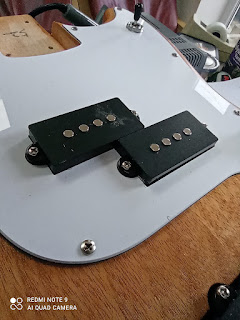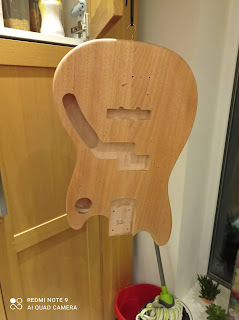Days Four and Five

In one sense these two days are a continuation of Day Three because as the levels of Boiled Linseed increase along with the depth of the colour. More importantly, so too does the time it takes for the oil to be absorbed into the wood – except on the end grain, naturally. After I'd wiped six coats on the body I was happy that most of the redness had been removed and I began applying the coats of polyurethane varnish. This was planned from the outset to be a satin finish – I was very struck by the look of a recent Fender guitar model finished in satin though I didn't properly appreciate the implications of taking the same route. First of all, I chose a coloured polyurethane varnish intending to move further from the mahogany colour – my choice was Rustins in light oak. This was a good choice and worked well. As with the first guitar build I used a very diluted treatment and of course, this meant the polyurethane was absorbed into the end grain. Ultimately this meant the body need...


